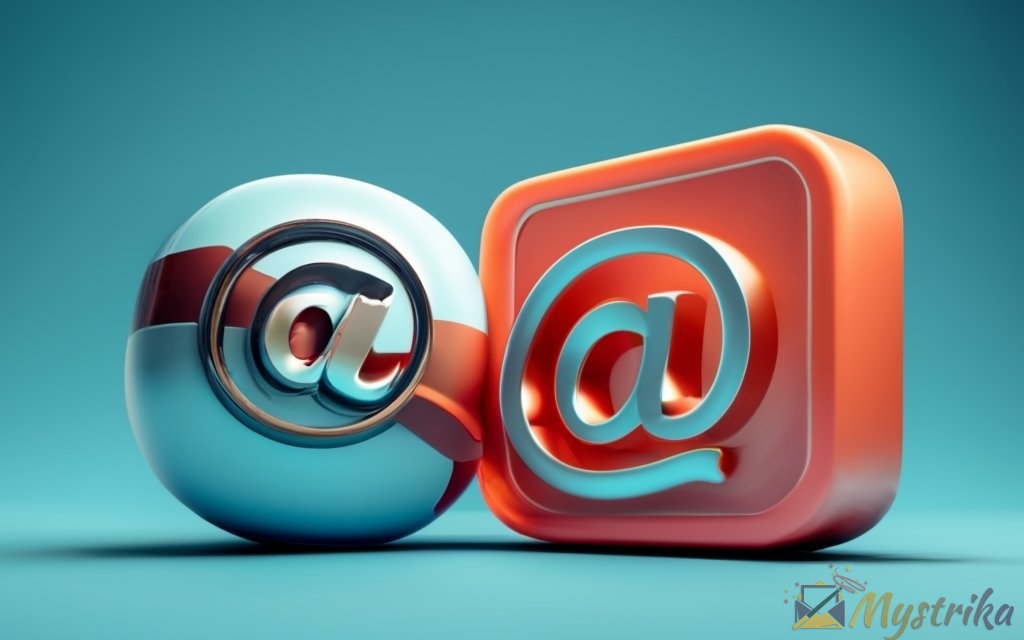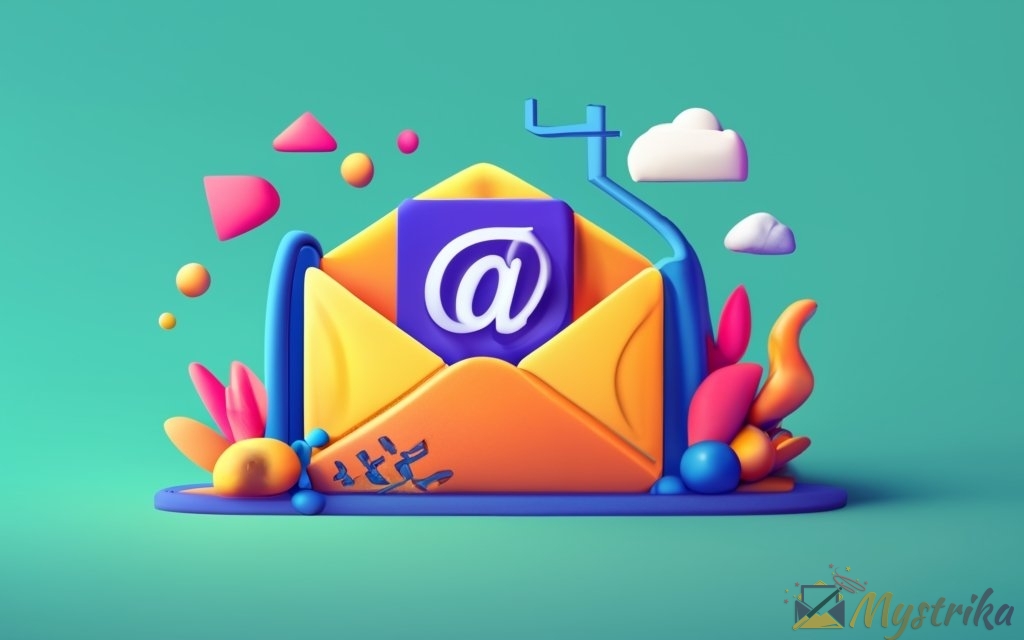Having your emails constantly landing in spam is a nightmare – but a properly warmed up domain prevents that inbox catastrophe. This comprehensive guide explores everything you need to know to warmup like a pro.
You’ll learn proven volume ramping strategies, engagement monitoring tactics, required authentication, common issues and troubleshooting tips. Follow these best practices and your domain will reach that coveted trusted sender status in no time!
Say goodbye to the spam folder and unlock your messages’ true potential. Let’s dive in and discover how proper email domain warmup sets you up for long term deliverability success!
What is Email Domain Warmup & Why is it Crucial?
Definition & Purpose of Domain Warmup
Email domain warmup is the process of gradually increasing the volume of emails sent from a new or inactive domain to establish a positive sending reputation and improve deliverability.
The main purpose of warming up a domain is to avoid having your emails automatically filtered as spam when you start sending messages from a previously unused domain.
Let’s break it down further:
- New domain: Any recently registered domain that has no history of sending emails has no reputation with major email providers like Gmail, Outlook, etc. These providers will be suspicious of any domain that suddenly starts sending lots of mail.
- Inactive domain: A domain that hasn’t been used for sending email newsletters, campaigns, or other bulk messages for a prolonged period can also be perceived as higher risk if activity picks back up. Its reputation decays over time.
- Gradual volume increase: Proper domain warmup involves incrementally increasing the number of emails sent each day/week rather than blasting out mass volumes all at once. This shows providers the domain can be trusted.
- Building positive reputation: Warmup demonstrates your commitment to reputable sending practices. As you gain trust, filters will be less likely to divert your mail to spam folders by default.
Without warming up properly, your domain will lack the positive reputation needed for inbox placement. Trying to send large volumes right away signals uncontrolled, potentially malicious sending behavior.
Think of it like building up credit – you need to demonstrate responsible behavior over time to increase your email “credit score” and available “credit limit.” Warmup builds that critical trust and reputation.
How Domain Reputation Impacts Deliverability
Your domain’s reputation has a massive influence on email deliverability. Internet service providers like Gmail base most of their spam filtering decisions on the sending reputation of domains.
There are two key ways domain reputation impacts deliverability:
1. Spam folder filtering
The stronger your domain’s reputation, the less likely ISPs are to divert your mail to spam folders. Positive, trustworthy domains get the benefit of the doubt.
Unfamiliar or sketchy domains will be filtered as spam by default unless emails are explicitly marked as important by recipients.
2. Email sending limits
ISPs also limit how many emails new or risky domains can send based on reputation. The better the reputation, the higher these volume limits will be.
For example, Gmail may only allow 100 emails per day from a brand new domain, but over time will lift limits to allow tens of thousands/day as you prove reliable sending practices. A poor reputation could actually decrease limits.
In worst case scenario, recipient email address can flat out reject the delivery of your emails, and send you a bounce back instead.
That’s why proper warmup is so key – you want to build the positive reputation needed to send higher volumes and avoid aggressive filtering. Taking it slow and steady is best.
Differences Between Domain & IP Warmup
Domain and IP reputation are closely tied together when it comes to email deliverability. However, there are some key differences between warming up a domain vs an IP address:
- Domain: Tied to custom email address/hostname. Each unique domain has its own reputation.
- IP: Physical server address sending your email. Can be shared or dedicated.
Key Differences:
- Domain reputation is influenced by factors like spam complaints, engagement metrics, blacklist status and more. IP reputation depends more on sender behavior and toxicity.
- Domain warmup focuses on volume increases, engagement, and quality content. IP warmup prioritizes monitoring rejection rates, spam complaints, and more.
- Warming up multiple domains simultaneously is easier than multiple IPs, since you can scale domains endlessly. IPs are finite resources.
- Damaging domain reputation has broader implications, as it can directly impact the trustworthiness of your brand and all email addresses using that domain.
- Switching IP addresses can be used as a workaround for IP reputation problems. Damage to a domain reputation is harder to escape.
In nutshell:
While domain and IP reputations are intertwined, domain reputation tends to be the primary factor evaluated by major email providers when filtering spam.
Investing the time upfront to properly warm up your domain will pay dividends in terms of deliverability and avoidance of aggressive spam filtering. Don’t skip this crucial step!

Step-by-Step Guide for Warming Up a New Domain
Alright, time to walk through the nitty gritty details of properly warming up a brand new domain from start to finish.
Follow these steps and you’ll be ready to start sending campaigns at full speed with an optimal domain reputation:
Research Email Sending Limits & Upgrade if Needed
Before warming up your domain, take time to understand the daily sending limits imposed by your email service provider.
Most ESPs have tiered plans that increase limits as you pay more. The lowest tiers may only support a few hundred emails per day. Not ideal during warmup when you’ll need to scale volumes gradually.
Here are some approximate sending limits for popular ESPs:
- Do You Mail : First of it’s kind automated DNS setup Email Infra (allows cold email)
- Gmail: 500 free via web interface, 100 free via SMTP, up to 2K paid
- Outlook: 300 free, 10K+ paid
- Zoho: 50 free (No SMTP), 2.5K+ paid
- SendGrid: 100 free, 100K+ paid
- Mailgun: 300 free, 50K+ paid
- Amazon SES: 62K+
As you can see, free plans are quite limited compared to paid options that support tens or hundreds of thousands of emails per day.
However, your Sending Limit is not a representation of your Email Reputation, and in real life your email reputation defines your Email’s Successful Delivery. Eg, for Cold Emails, your email address should not be sending for than 50 emails / day, and your domain overall should not be sending more than 200 emails / day.
I’d recommend considering upgrading to a paid ESP plan before starting domain warmup if:
- You anticipate needing to send >500 emails/day after warmup
- You don’t want to waste time dealing with daily sending limits
- You’d like access to more advanced analytics and insights
Then you can ramp up volumes smoothly during warmup without constant throttling.
Tip: Namespace limits apply per unique “To”, “Cc” and “Bcc” address rather than total emails sent. So splitting volumes across multiple recipient addresses avoids breaching limits.
Set Up a Dedicated Domain for Outreach Efforts
Next up, register a brand new domain that will be used exclusively for your outbound email campaigns and lead gen efforts.
Do NOT use your primary company domain for this purpose.
Why dedicated? Several reasons:
- Insulates your company’s main domain reputation from potential damage if campaigns underperform
- Frees you up to experiment during domain warmup without risk
- Prevents your cold outreach emails from impacting deliverability of other important mail
Some best practices when setting up your dedicated outreach domain:
- Branding: Include your company name for consistency, like
tryyourcompany.com - Age: Let it age 1-2 months before sending any mail for best results
- WHOIS privacy: Hide your info with domain privacy services
Once you’ve registered your new sending domain, go ahead and set up the initial email address(es) you’ll use during the warmup process.
I’d suggest sticking to just 1 or 2 addresses on the domain to start. You can always create more later after reputation is established.
Configure SPF, DKIM & DMARC Authentication Records
Now it’s time to get your domain properly configured with the key email authentication systems – SPF, DKIM, and DMARC.
These serve as verification to receiving servers that you own your domain and are authorized to send mail from it.
Here’s a quick overview:
- SPF verifies servers approved to send mail from your domain. This helps receivers authenticate legitimate emails.
- DKIM cryptographically signs each email to confirm the message hasn’t been tampered with in transit.
- DMARC aligns SPF & DKIM to tell receivers what to do if authentication fails (e.g. send to spam).
Full configuration is too lengthy to cover here. But most ESPs will walk you through setting up the required DNS records for your domain during account setup.
If not, you can follow instructions for manual configuration:
These authentication protocols are crucial for building credibility and establishing your domain as trusted by major ISPs. Don’t skip them!
Did you know : Do You Mail, automatically setup these records for you?
Gradually Increase Volume Sent to Trusted Contacts
Now comes the actual process of warming up your domain!
To start, you’ll want to gradually increase the volume of emails:
- Sent from your new domain
- To recipients with reputable inboxes
This demonstrates to spam filters that real people engage with your messages.
Some tips:
- Start with just a handful of emails in week 1
- Increase by 10-20% daily; 50-100% weekly
- Target professional inboxes with high engagement
- Personalize content to improve response
- Manually send one-off emails instead of bulk blasts
- Pause increases if bounce/complaint rates spike
Take it slow, focusing on quality engagement over spamming inboxes with mass volume.
Patience is key – properly warming a domain takes at least 1-3 months for most use cases. Don’t ruin your hard work by sending too much too fast.
Closely Monitor Engagement & Bounce Rates Daily
Throughout the domain warmup process, you’ll need to closely monitor your email engagement and delivery metrics.
Watch for:
- Sharp upticks in bounce rates
- Spikes in spam complaints
- Sudden drops in open/click rates
Tools like Mystrika make this easy by tracking key performance indicators as you increase sending volumes.
If you notice deliverability metrics trending negatively, pause your volume increases until things stabilize.
You may even need to dial back your emails if a specific ISP throttles your domain. Let engagement and soft bounce rates recover before ramping back up.
The goal is gradual, consistent reputation building. Don’t let poor metrics tank your deliverability.
Consider Using an Automated Warmup Service Like Mystrika
Manually warming up a domain while monitoring all metrics takes significant effort.
An alternative is leveraging an automated email warmup service like Mystrika.
Here’s how an automated solution like Mystrika helps:
- Gradual volume increase following ideal sending patterns
- Engagement generation from high-quality warmup inboxes
- Automatic pull from spam folders to improve standing
- Bounce monitoring with pausing of problematic IPs
- Detailed analytics to optimize your warmup strategy
Mystrika takes care of all the heavy lifting so you can focus on other parts of your campaign while still warming up properly.
It uses engagement and volume patterns proven to establish positive domain reputations.
This table explains key differences vs manual warmup:
| Manual Warmup | Automated Warmup | |
|---|---|---|
| Volume increase rate | Manual daily/weekly increases | Automatically optimized |
| Inbox targeting | Manual outreach to personal contacts | Curated high-quality inboxes |
| Engagement | Inconsistent based on recipients | Guaranteed automated engagement |
| Spam monitoring | Manual checking | Automatic unsolicited for flagged emails |
| Bounce handling | Manual list cleaning | Auto disable bouncing addresses |
| Reporting | Limited without paid tools | Detailed analytics included |
The hands-off approach of automated services provides peace of mind your domain is being warmed up using industry best practices.
And Mystrika even offers free domain warmup for one email address, so you can benefit without any financial commitment.
Just something to consider if you want domain warmup made easy!

Email Domain Warmup Best Practices & Tips
Let’s run through some pro tips and best practices to follow for maximizing the effectiveness of your domain warmup efforts:
Take a Slow, Steady Approach Focused on Quality Over Volume
The number one rule of proper domain warmup is taking things slllloowww.
It can be tempting to speed up the volume increases rapidly or blast out huge email batches all at once. Avoid that temptation!
You should be focused on demonstrating quality, deliverable mail rather than spamming inboxes with as much mail as possible:
- Start with just a few emails daily, and build volume gradually over weeks/months
- Increase volumes by only 10-25% daily; 50% weekly at most
- Target engaged recipients rather than just blasting any inboxes
- Monitor metrics closely, and pause/decrease if deliverability suffers
Think “slow and steady” rather than trying to rush to full sending capacity right away. There are no shortcuts here!
Patience and small consistent increases will pay off in the long run as you build sender reputation.
Personalize Messages & Ensure Excellent Email Copy
The actual content of your emails also matters during domain warmup.
You want to demonstrate you’re sending high quality, personalized mail that engages recipients.
Some tips:
- Avoid spammy keywords and copy at all costs
- Use each recipient’s name in greetings and email body
- Write thoughtful, custom content for each message
- Make emails conversational and relatable
- Encourage replies with questions or offers
Well-written, personalized copy keeps recipients engaged. And high engagement signals to ISPs that your mail is desirable, improving your reputation.
Sloppy, spammy copy has the opposite effect. So take your time crafting excellent content. It’s worth the effort for deliverability!
Prioritize Recipients with Strong Existing Reputations
Who you target for your initial domain warmup emails also impacts effectiveness:
- Reach out to professional contacts with aged business inboxes
- Leverage personal email addresses with high engagement
- Avoid buying random email lists for warmup purposes
- Use feedback loops and auto-responders to simulate engagement
Focus on recipients that already maintain trusted inbox reputations with major email providers. This gives your domain “guilt by association” as you begin sending.
Avoid riskier tactics like purchased lists that are more prone to errors, abuse, and disengaged recipients. Play it safe while your domain reputation is still fragile.
Maintain Ongoing Conversations & Encourage Engagement
Don’t let your warmup emails turn into dead-end one-off messages. Maintain the conversations!
Continued back-and-forth shows providers your mail is generating interest and engagement.
Some tips:
- Respond promptly to any replies you receive
- Ask questions to keep the dialogue flowing
- Forward any interesting discussions to your personal inbox
- Consider auto-responders to guarantee steady engagement
You want to simulate genuine conversations that recipients enjoy partaking in. This establishes you as a sender people actually want to hear from.
Use Separate Subdomains for Different Types of Emails
As your business grows, you may find yourself needing to send different types of email from your domain – such as:
- Marketing messages and newsletters
- Transactional emails like receipts and alerts
- Administrative notices and reminders
Each type benefits from having its own subdomain to isolate reputation:
marketing.yourdomain.comsupport.yourdomain.comalerts.yourdomain.com
This segmentation prevents issues with one mail type damaging deliverability for your other important messages.
You’ll still need to warmup each new subdomain butisolation limits cross-contamination. Don’t lump all mail together under your root domain unless volume is low.
Always Monitor Blacklists to Avoid Damaging Reputation
Throughout your domain warmup and beyond, be sure to monitor email blacklists on an ongoing basis.
Being added to blacklists like Spamhaus or Sorbs will tank your sender reputation with many major ISPs.
Use a blacklist monitoring tool to receive alerts if your domain appears on any lists. Common causes include:
- Spikes in spam complaints
- Significant malicious content sent
- Spoofing other domains
- Compromised credentials/hacked accounts
If you end up on any blacklists, you’ll need to request immediate removal and identify what issue triggered the listing to prevent recurrence.
Blacklists signify severe issues as far as email providers are concerned. So stay off them to maintain positive domain reputation!

How Long Does Domain Warmup Take? Set Proper Expectations
Given the hands-on nature of properly warming up a domain, a common question is: how long does it take?
The short answer is domain warmup takes 30 days at a bare minimum, with 60-90 days being ideal. However, there are a number of factors impacting the timeline.
30 Days Minimum for Basic Warmup, 90 Days Ideal
For a straightforward use case with moderate volume goals, plan for at least 1 full month of dedicated domain warmup activities.
This allows time for:
- Volume increases from 0 to 500+ emails/day
- Developing relationships with recipient inboxes
- Monitoring and reacting to engagement metrics
- Gaining visibility with major ISPs
Within 30 days, your domain should have sufficient fundamentals established to avoid any immediate issues. But don’t necessarily expect high volumes or seamless deliverability just yet.
For more robust, long-term deliverability, a 60-90 warmup is recommended. This extended timeframe allows you to:
- Take a more conservative approach to volume increases
- Achieve higher ultimate sending capacity
- Build redundancy across multiple ISPs
- Confirm positive metrics across sending patterns
So while 1 month is viable for basic warmup, consider extending to 3 months if you can. This helps cement great deliverability and minimizes the risk of future issues.
Factors Like Volume Increase Rate Impact Timeline
The actual rate you choose to increase sending volume can significantly impact your domain warmup timeline.
Some factors to consider:
- Daily vs weekly increases – Increasing daily shortens total duration, weekly provides more buffer
- Percentage of increase – 10% daily is conservative, 100% weekly risky. 25% daily/50% weekly is a good baseline.
- Target volume goals – Warmup to 500+ daily emails takes ~15-30 days. 10K+ daily requires 45-90+ days.
- Engagement monitoring – Pausing/decreasing volume when metrics decline extends warmup.
- Email copy/lists – High quality and engaged recipients speed things up.
Please Note : The volumes we are talking about here is not related to Cold Emails. They follow a entire different volume strategy.
The more aggressively you scale volume, the faster you can complete warmup assuming you don’t damage reputation along the way. But being impatient is often counterproductive.
Find a measured increase schedule aligned with your use case for ideal results without unnecessary rush.
Continual Maintenance Needed After Initial Warmup
A common misconception is that you can just “complete” domain warmup and be done.
In reality, you need to continually maintain your sender reputation over time via:
- Ongoing engagement monitoring
- Monthly volume increases
- Regular email list cleaning
- Up-to-date authentication records
- Blacklist monitoring
- Bounce/complaint tracking
Consider your initial domain warmup phase just the starting point to get your fundamentals in place. Maintenance is critical for longevity.
Many tools like Mystrika can help automate upkeep of your domain reputation after the initial warmup period.
Mystrika actually advises perpetual automated warmup to maintain optimal deliverability even years after your initial efforts. Turning warmup off is one of the biggest mistakes senders make long-term.
The takeaway is to treat reputation management as an indefinite process rather than a one-and-done event. Your work doesn’t end after the first 30-90 days!

Should You Warm Up an Existing Domain Before Outreach?
If your company already has an established domain that’s been used for email – like your primary brand domain – should you still warmup before cold email outreach?
There are pros and cons depending on usage factors.
Please Note : Never use your primary domain for Cold Email of any kind. Always use replaceable or supplement domains.
Assess Current Reputation Before Cold Emailing
If your existing domain has been actively used for sending newsletters, promotions, ecommerce receipts, etc. then its current reputation is likely sufficient for most outbound needs.
Some indicators your existing domain reputation is already strong:
- Domain has been used consistently for 6+ months
- No spam or authentication issues historically
- Regular monitoring confirms inbox delivery
As long as you’ve been following best practices and have proof of strong engagement and inbox placement, your primary domain is probably fine for outreach.
But if the domain has been inactive, operates at low volume, or lacks proper monitoring/metrics – a warmup is recommended before launching large cold email campaigns.
Consider Risks of Damaging Company Domain Reputation
The downside of using your existing brand domain for cold outreach is any issues that arise may damage your company’s core email reputation.
Some risks include:
- Aggressive filtering if engagement metrics are poor
- Increasing spam complaints/opt-outs
- Impacting existing customer communications
- Shared IP reputation effects from poor sender behavior
Once your primary domain develops problems, they spread across your entire email ecosystem.
That’s why even domains with strong reputation are often gradually warmed up again before scaling cold outreach volume – just to be safe.
Use Subdomains to Isolate Marketing Emails from Transactional Mail
A smart way to leverage an existing domain while protecting it is utilizing a dedicated subdomain for all your marketing campaigns.
For example:
www.yourcompany.com– Primary brand domainmarketing.yourcompany.com - Marketing email subdomain for your Subscriber's
This segmentation isolates the sending reputation for marketing email from your customer-facing communications.
Things to note when using subdomains:
- Each subdomain must be warmed up independently
- Separate DKIM/SPF configuration required
- Helps avoid shared IP reputation problems
- Email issues are contained, not company-wide
Just be sure to actually warmup your new outreach subdomain properly. Don’t assume the parent domain reputation carries over.
But this approach gives you the benefits of an established domain while limiting cross-contamination risks. Give it strong consideration before using your primary domain.

Troubleshooting Deliverability Issues During Domain Warmup
Even if you follow best practices, you may run into deliverability speedbumps during domain warmup.
Here are some common issues and troubleshooting tips:
Adjust Volume Increase Rate if Metrics Turn Negative
The most common warmup issue is increasing volume too quickly during the ramp-up phase.
Signs you need to pull back:
- Sudden spike in bounce rates
- Decline in email opens and clicks
- Uptick in spam complaints or unsubscribes
This indicates your current volume/sending patterns are hurting your emerging reputation with major ISPs.
To correct, immediately:
- Revert to the last volume level before the spike
- Reduce your daily/weekly increase rate
- Pause increases until metrics stabilize
Then slowly ramp back up, keeping a close eye for further deterioration as you scale up. The goal is finding the optimal rate of volume growth for your domain’s reputation.
Leverage Feedback Loops to Improve Engagement
Poor engagement metrics like low open and click rates can also hurt warmup efforts.
Beyond writing better copy, you can artificially increase engagement using:
- Auto-responders to guarantee steady replies
- Inbox forwarding to ensure opens
- Canned responses like Gmail’s to quickly respond
- Follow-up sequences and ongoing conversations
These tactics simulate real interest until you refine your outreach strategy for intrinsically higher engagement levels.
Just avoid overdoing it in a clearly fake way – moderation is key.
Switch to Dedicated IP if Shared IP Reputation Poor
With shared IPs, other senders can drag down your reputation.
Signs of a poor shared IP:
- Emails filtered as spam from the start
- Sudden deliverability decline without changes
- Messages delayed or spreaded by providers
Migrating your sending domain to a new, dedicated IP address can resolve this.
You’ll retain your domain/auth reputation while shedding the poor shared IP’s baggage. Just be sure to warmup the new IP too.
Ensure Quality List to Minimize Hard Bounces and Abuse complaints
Here are a few quick tips to keep your lists optimized during warmup:
- Scrub for invalid and abused emails using verification tools
- Remove non-responding addresses after the first few mailings
- Add any spam complaints back to your list for monitoring
- Double opt-in and confirm any purchased/imported lists
- Review new segments for relevant interest before adding
Low quality lists lead to more abuse and engagement issues. Continually prune yours to send only to valid, engaged recipients.
And heavily monitor any external segments/sources added to catch problems early.
Proactively managing your lists helps avoid deliverability headaches and keeps your sending domain’s metrics positive.
Key Takeaways on Warming Up Your Email Domain
The most important points to remember when warming up a new email domain:
- Gradually increase sending volume in small increments over weeks/months rather than all at once
- Prioritize engaged recipients like existing contacts to build deliverability faster
- Closely monitor metrics like spam complaints and implement fixes for any negative trends
- Properly configure SPF, DKIM, and DMARC authentication protocols for deliverability
- Consider using an automated warmup service to simplify the process and guarantee best practices
- Warmup is ongoing – plan for continual maintenance even after initial ramp-up period
- Subdomains can isolate marketing efforts from primary domain to minimize cross-contamination
- Adjust volume and assess lists if bounce rates and spam complaints increase
- Allow 1-3+ months for full warmup depending on end volume goals and ramp rate
- Avoid damages to existing domain reputation by using dedicated domains/subdomains
Following these tips will help ensure your domain establishes the positive reputation needed for inbox delivery and long-term sender success!
Frequently Asked Questions About Email Domain Warmup
What is domain warmup?
Domain warmup is the process of gradually increasing the number of emails sent from a new or inactive domain in order to build a positive sending reputation and avoid spam filters.
Why is warming up a domain important?
Warming up domains properly helps establish trust with major email providers like Gmail and Outlook. This results in fewer emails being flagged as spam so more messages reach the inbox.
How long does domain warmup take?
A proper warmup typically takes 1-3 months depending on your volume goals. 30 days is viable for basic warmup, but 60-90 days allows more time to build strong reputation across providers.
What are some best practices for domain warmup?
Some key best practices include taking it slow, monitoring engagement metrics, targeting engaged recipients, configuring authentication protocols, avoiding blacklists, and considering automated warmup services.
Should I warmup an existing domain before outreach?
If your existing domain already has strong reputation from active use, warmup may be unnecessary. But using subdomains can isolate outreach from customer communications.
How do I troubleshoot deliverability problems during warmup?
Adjust volume increase rate, improve engagement via loops/sequences, switch to dedicated IPs if needed, and scrub your lists to maintain optimal metrics.
What’s the difference between domain and IP warmup?
Domain reputation relies more on volume, engagement, and content. IP warmup focuses on spam complaints, rejections, and malicious sending patterns. Both are important.
How can I warmup a domain for free?
Options include gradual outreach to engaged contacts, free trials of paid warmup services, leveraging inbox provider feedback loops, and using Mystrika’s free domain warmup.
Is domain warmup a one-time thing or ongoing?
Warmup is just the initial phase – continual maintenance like list cleaning and engagement monitoring is crucial long-term after completing initial ramp-up.

